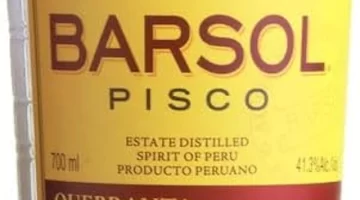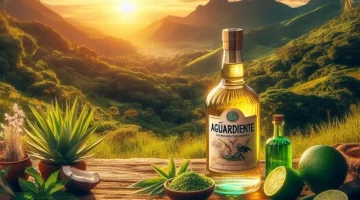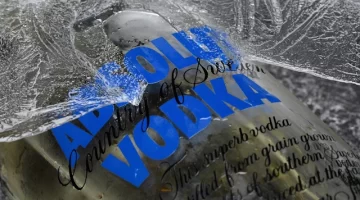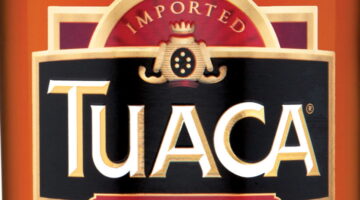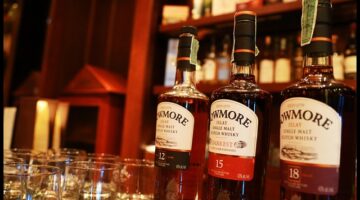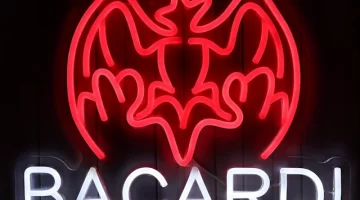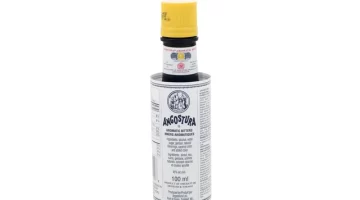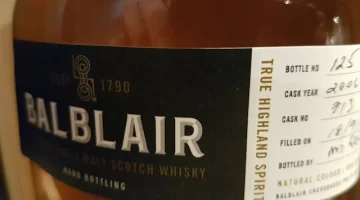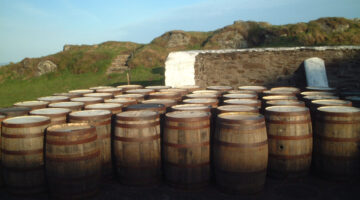Madeiran Rum
Travel Distilled presents a beginner’s guide to Madeiran rum by Madeiran rum expert Harold Vieira, co-founder of Harold and Hansa, specialists in Madeiran Rum.
Guest Post

The Portuguese island of Madeira, known as the Pearl of the Atlantic, is located 850 km (528 miles) southwest from Portugal with a population of around 250,000. The island is renowned for its beautiful landscapes, with 90 miles of coastline and a varied terrain. But increasingly for Madeiran rum.
Madeira is a volcanic island with a mild to warm climate all year round. This helps to explain why currently the three main industries of the island are tourism, banana cultivation and Madeira Wine. However, in recent years the production of Madeira rum – which was once the biggest industry in Madeira – has been revived and is expected to be one of the country’s greatest exports in the coming years.

Madeiran Rum
Rum da Madeira, as it is known on the island, is an Agricole rum with an extensive history, and cherished by rum enthusiasts for its complex yet refreshing flavour profile. The warm climate of Madeira, together with its fertile volcanic soils, means this European landmass yields exceptional quality sugarcane.

What further sets Madeira rum apart from other rums are the meticulous methods of production undertaken by the distillers on the island. Timeless distillation methods combined with exceptional craftsmanship result in rums with extraordinary flavours. Madeira rums have been recognised by the drinks community, with many rums from the island having won top awards and accolades across international spirit competitions over the years.
How Madeira Became a Rum Pioneer
Madeira Island was officially discovered in 1419 by three explorers – João Gonçalves Zarco, Tristão Vaz Teixeira and Bartelomeu Perestrelo – by the order of Prince Henry the Navigator (1394-1460) from Portugal. The name ‘Madeira’ is derived from the word for wood, due to the island’s historic abundance of dense forest. The first settlers of Madeira cleared the dense laurel forest to grow grain, but soon after decided to plant sugarcane instead, with these crops originating from Sicily.

Madeiran Rum History
Madeira’s geographic location, warm climate, abundance of water and volcanic fertile soil meant sugarcane flourished and contributed to the island’s prosperity. By 1466 sugar became the main industry. The demand for sugar in the 15th century was so high that across Europe the crop was known as “white gold”.
Madeira was thriving, producing an amount equivalent to half of the sugar consumption in the whole of Europe. Sugar from Madeira was considered to be of the highest quality, and despite competition from other sugar producers like Sicily, Egypt and Morocco, Madeira started to export its sugar across the world.
During this period of prosperity, Madeira began its production of rum, with some of the production methods and technologies still used today. Madeira rum enjoyed both a domestic and foreign market and was transported overseas by sailors and traders.
However, the sugar and rum industry of Madeira started to experience a decline in the 16th century, as a result of the decision to plant sugarcane in Brazil, a Portuguese colony at the time. Sugarcane grew effortlessly in Brazil, and so Madeira – with its sloped land and therefore more labour-intensive production – was unable to compete against the new, cheaper sugar from Brazil.

Sugarcane Disease
Furthermore, in the 17th century, a sugarcane disease surged across the island, which was the hammer blow to Madeira’s sugar and rum industry. Sugarcane fields were replaced with vineyards and other fruits. By the late 20th century, sugarcane production declined by over 95% from its peak in the 15th century.
The 21st century saw a revival of the sugar and rum industries on the island, thanks to government support and a drive by the local population to renew their traditional skills and heritage. Today, sugarcane accounts for a total area of 172 hectares (425 acres) on the island, with all the production carried out by small family-owned farms.
The cane continues to be grown on sloped land, with gradients greater than 25%. For that reason, small-scale farmers continue to harvest sugarcane by hand without the use of large-scale machinery. Madeirans take great pride knowing that sugarcane continues to be harvested in this traditional way, and it’s believed this corresponds to an exceptional product as the care and quality of the sugarcane is considered paramount.

What makes Madeira Agricole Rum so unique?
All rum comes from sugarcane, molasses, or sugarcane juice But not all sugarcane is created equally. Madeira sugarcane is considered one of the best in the world with very distinct characteristics, thanks to Madeira’s unique microclimate, volcanic soil, altitude and oceanic influences, which contribute to the cane’s distinct nuanced flavour profile, rich in aromatic compounds and complexity.
There are three types of sugarcane grown on the Island; POJ 2725 (also known as Purple cane), NCO 310 ( also known as Green cane) and Yuba (also known as Canica) which is endemic to the island.
Not only does Madeiran rum come from this exceptionally high quality cane, it is taken through a careful production process that influences the final flavour.
The first stage in the process of rum-making is harvesting. To preserve the sugarcane’s quality and considering the island’s sloped terrain, all harvesting is done by hand, which means care and attention to detail are paramount.
The next step is crushing the sugarcane. This is done in more than one mill to ensure all the juice is extracted. In most cases, the crushing is done the day after the cane has been harvested, in order to maintain the sugar level and extract the maximum quantity of juice. The crushed sugarcane juice then goes into a reservoir where the next step takes place.

After the crushing of the cane where the juice is extracted, the fermentation process begins. The process is exclusively alcoholic fermentation with the help of yeast and usually takes between 24 and 72 hours.
The penultimate stage in rum making is distillation and in Madeira the most traditional type of distillation is achieved via a copper still, which results in small-batch rums with unique flavour profiles. Madeiran Rum can also be distilled in a column still, which allows for a more consistent rum and higher volumes.
It should be noted that Madeira only produces Agricole rums – that is rums made by distilling fresh sugarcane juice. This is in contrast to over 90% of the rums produced globally which are molasses-based. Molasses is a by-product from the refinement of sugar, so in essence it is a cheaper way of producing rum. With Agricole rum, no sugarcane juice is diverted to making sugar. Therefore, with Agricole rum, the consumer gets the full essence of the sugarcane in the final product.
The last and most important element in producing Madeiran rum is the ageing phase. All Madeiran Rums are aged in French oak barrels, which contribute deep and rich flavour profiles. The most Premium rums of Madeira will typically be aged in oak casks that previously held Madeiran Wine. These casks impart a sweet, brandy-like flavour to rums, incomparable to other rums on the market.
Once we consider the whole production process of Madeira rum, from the harvesting of the cane to the ageing of the distilled product, we can understand why Madeira rum is highly renowned for its smoothness, richness and complexity. Notes of dried fruits, caramel and vanilla sing in harmony to the tune of bolder oak tones, making for a truly exceptional product.
ABOUT THE AUTHOR
Harold Vieira is co-founder of Harold & Hansa, experts in Madeira rum. Established in 2021, Harold & Hansa is on a mission to turn the spotlight on lesser-known, premium quality rums from Madeira. Co-founder Harold is from this beautiful Portuguese island and his family has been involved in the rum trade for many years.

Using exceptional varieties of sugarcane and a meticulous production process, Madeira creates some of the best rums in the world. The team at Harold & Hansa handpick the finest rums from the island to bring to the trade and consumers in the UK. The company also organises Rum Tasting events to take you on a journey to discover the spirit of Madeira, sip by sip.
